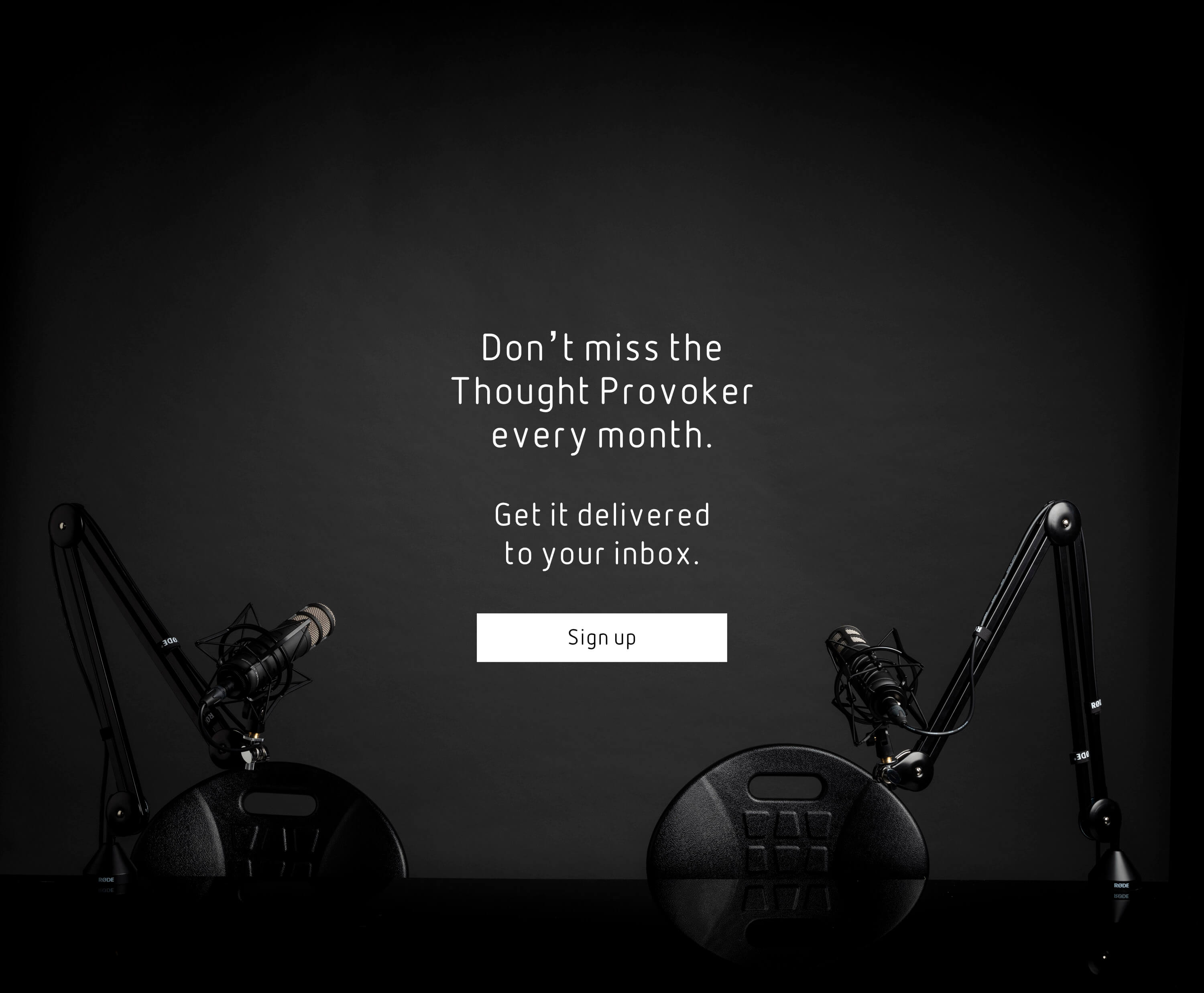If you don't define it, it defines itself. Culture is the secret sauce for the best business we work with. If it's not spoken about often, it's unspoken. It can tightly bind your business or cause rapid wildfires.
Our work with the fastest-growing, highest profit and most successful firms in recruiting top talent all share common elements. What defines you? How do you multiply your culture across multiple geographic regions? And what do you need to create an unstoppable culture of sustainable performance?
Purpose Best described as the customer's emotional outcome after their interaction with your product, purpose is at the core of a great business. Johnson and Johnson 'alleviates pain', Nike makes you 'feel like an athlete', and Harley Davidson is the 'freedom machine'. You'll never achieve your purpose; it's enduring. You'll work at it for the rest of the firm's existence. US publicly listed firm Compass helps you 'find your place in the world'. Northern Beaches’ powerhouse Upstate wants to help you 'find yourself in a better place'. When a business gets clear about what it does - when it knows why it exists in the world - then it aligns all its resources and management knows how to deliver on that purpose for tomorrow's customer. Without clarity of purpose it's hard for any firm to know where to begin.
Mission A set of specific metrics that, once achieved, allows the business to progress to its next stage in growth. Your mission could be the number of sales, properties under management, customers served, geographic locations, or staff employed. Missions are set 5 years in advance. It allows the executive leadership team to align projects - will this or won't this help us get to where we want to go? Fast growth businesses set that mission using exponential growth principles: know that you can leverage fast off your existing platforms. Slow growth firms go for layered growth, adding a little more to what they did last year. The secret is to know how big your market is and systemise how you capture a market, so you can go after bigger and better markets faster, with less capital burn.
Values The rules of how you play the game. You can't expect your team to play by a set of rules that don't exist. If the rules are clear, you can use them to hire, fire, and manage your team. The best have a maximum of five values, usually with up to 5 words for each. Values need to be lived out by the executive leadership team, then supported through everything the organisation does. They feature at the opening of every meeting, every training session, and in every one on one. There's an expectation that everyone knows the values so that they can live by them. There's a values award as voted by the team each month; they're on the office wall and, most importantly, in the hearts of every person in the organisation. They are the guiding principles that enable people to make quick decisions when there is no policy or procedure to follow. We use the + . - chart to evaluate each team member in how they are living out the values. First, we get each individual to rate themselves and the leadership team. Then the leadership team rates each team member. This quickly identifies weaknesses in the company culture, or specific individuals who need support to live by the new values in the firm. Values crush learned history and help guide new behaviours for fast growth. We've watched an incredible transformation in Place Estate Agents in Brisbane, working with their team to establish a set of values, then live them out each day.
Meeting Rhythms The more often you meet, the faster the business grows. The secret to fast-paced businesses is that they meet on the right things first. Here's a simple meeting agenda for your leadership team:
- Recruitment
- Sales
- Property management
- People
- Marketing
5 minutes on each is a 25-minute meeting every week to ensure you're playing at your best. Note that recruitment is at the top of the list; it's not buried under the heading ‘HR’. A business's ability to attract and retain top tier talent makes the difference between being an enduring business that stays at the top, or one that blows itself up in spontaneous combustion of misguided management.
Functional Lanes The challenge in small businesses is that when you first start, you do everything. As the organisation hits specific growth metrics on its mission, the organisational chart grows. Specific roles are added to build strategic strength and capability. Initially, you may have had someone who was a lead salesperson and the sales manager. Now you add a sales leader who undertakes the talent acquisition, development, coaching and retention for the firm. You must let go to grow. Remember not to add titles that promote ego and low work ethic. The bigger the title, often the less work that gets done. The moment you become a director, you add to your workload, not take away from it. A director has a responsibility to either produce income or drive strategic growth through their day to day actions. Know what you do and how you're measured; two critical components for long term success.
The team needs to know who does what. The best teams use tech to scale leadership. We use live chat support Intercom to direct the right customer questions to the right person in the business. It allows us to build a library of responses that provide a help and information desk for fast information delivery.
My favourite exercise is to ask each person in the team, 'Who are you? And what do you do here?'. The answer to those two questions tells me a lot about the individual, how they feel about what they do, and the scope of their role.
Language Cirque du Soleil has its language. It turns out if you call out every move to every performer, it becomes a boring show. High-performance estate agencies have their language too. That language guides the way you talk, what you measure, and how you act.
We use language to drive metrics. BAP for buyer appointment, MAP for Market Appraisal, and LAP for listing appointment. We track listings, sales and income, actual versus target. It sounds simple, but it's life-changing when a business uses the same language across multiple sites. For large scale deployment of new initiatives, you need to know how you talk around here. Language can damage a culture just as much as it can create it. We had one company where it was common for the leadership team to claim 'I didn't know', 'I wasn't aware’, 'No one told me'. We quickly outlawed that language and created a central location in a communication platform so the leadership team had one place where everything was located. Remember, it can take 14 times before someone hears what's being said for the first time. You can never repeat enough the core of what makes a great business seriously great. It's about creating a culture that's known for how it speaks. Aesop, the Australian soap brand, doesn't use the word ‘database’; every time they speak with a customer, they look to update the customers 'profile'. It's a fascinating insight into fast-paced businesses and how they talk to and about their customers.
How We Do It Around Here Don't expect me to figure it out; show me. At McDonald's, the 14-year-old is tasked with making all the decisions. Should the fries go out? Does the bin need to be emptied? How fast can I serve the customer from order to delivery? All principles are driven by core values of speed, quality and cleanliness. A business that does well knows why it's successful.
A set of data-driven decisions drives business models of the future. Reviewing why customers use you and how they met their agent becomes a critical backbone of future marketing plans. This data-driven approach encourages you to teach new and existing teams how it works around here.
The greatest impediments to our success are rarely the competition, but rather our own internal barriers that we create. A business of the future needs to know how it attracts its customers, how it pitches what it does (the ultimate emotional outcome it achieves for its customers) and how it delivers its services to the ultimate fulfilment of the customer's needs.
Break it down, think some simple slide decks around:
- How we prospect
- What we say in listing to win
- And how we sell properties for more, make it easy and reduce risk during a sales campaign
Teach, train, and test leads to massive success. Reduce the breadth of what you do, narrow down and do what works.
Future-focused or Drama Driven? When a crisis happens, what happens next? Leading firms turn straight to models like denial, crisis, opportunity and planning. Models allow you to identify exactly where you are and what you need to do next. Your business is either future-focused or drama driven. Future-focused organisations cut out the politics and get on with a bigger and better future. They believe in a better tomorrow; they have flexibility and agility. Drama driven organisations lack consistency; one location does well, whilst another flounders. They haven't worked out their secret sauce, are under-capitalised or under-systemised. The culture is weak, and today's drama drives their activities. They don't pull up and work at the strategic level. They set and forget, never revisiting, never realigning, and never reinventing what they do. You have to reinvest to reinvent. Is your organisation future-focused or drama driven?
Tech Lead We live in a digital world. There are over 350 Proptech companies across Australia and New Zealand. Each is building a set of tech to improve the way you serve your customers fundamentally. What's critical is that we adapt and apply technology that allows us to automate and scale more of the human moments that matter. Customer experience is by design, and it's critical that you realise that today's consumer is taking experiences in other industries and expecting the real estate industry to be the same. You don't realise how good an Uber is until you jump in a taxi and have to wait for the credit card to process. Business futures have technology at the core of what they do. They make their technology decisions based on how it serves the end customer and facilities the speed of workflow for their employees. Simple is best, and it must be mobile-first; after all, we are a mobile workforce. We've always worked from home, other people's homes, taking offers, running open houses or conducting private appointments. You can manage your finances, track your health, communicate with friends and listen to music on your mobile; why can't you run your real estate practice that way?
Customer Obsessed Without the customer, there is no business. At the heart of a great business is its purpose. You exist in the world because you.... There are three customers in your world: your existing customers who love what you do, your competitor's customers who clearly see value in what they do, and then non-consumers who've not yet done a real estate transaction. Spend time with each; they'll teach you more, help you align your marketing, and define a culture that helps you attract more customers.
How do you define your culture? Where are your blindspots? And what are you doing about them? Is your culture the type of culture your business needs to fulfil its potential?



